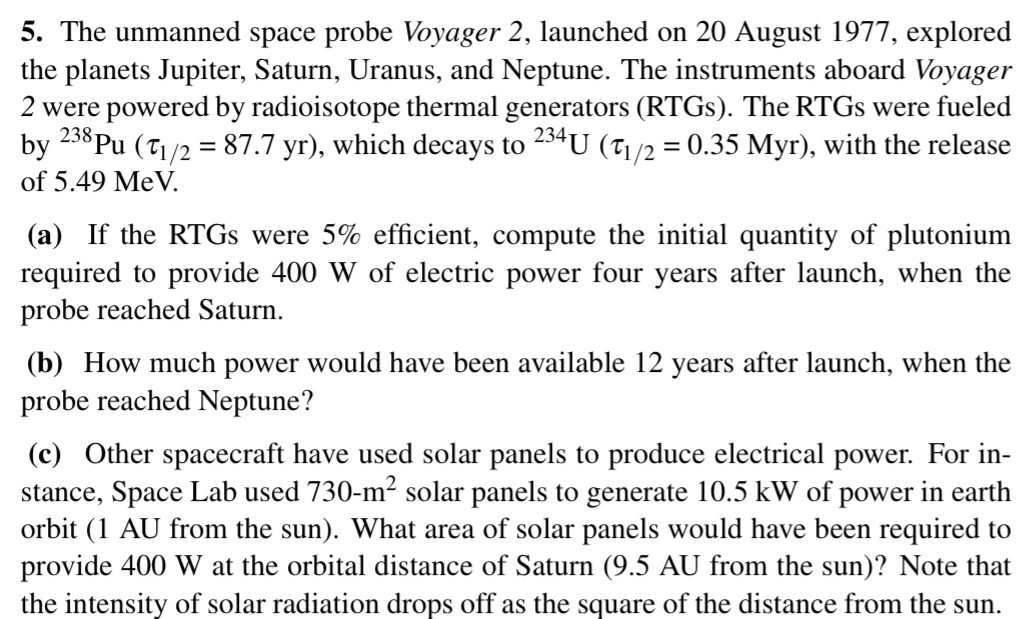Answered step by step
Verified Expert Solution
Question
1 Approved Answer
Please:) 5. The unmanned space probe Voyager 2, launched on 20 August 1977, explored the planets Jupiter, Saturn, Uranus, and Neptune. The instruments aboard Voyager

Please:)
5. The unmanned space probe Voyager 2, launched on 20 August 1977, explored the planets Jupiter, Saturn, Uranus, and Neptune. The instruments aboard Voyager 2 were powered by radioisotope thermal generators (RTGs). The RTGs were fueled by 238Pu(1/2=87.7yr), which decays to 234U(1/2=0.35Myr), with the release of 5.49MeV. (a) If the RTGs were 5\% efficient, compute the initial quantity of plutonium required to provide 400W of electric power four years after launch, when the probe reached Saturn. (b) How much power would have been available 12 years after launch, when the probe reached Neptune? (c) Other spacecraft have used solar panels to produce electrical power. For instance, Space Lab used 730-m solar panels to generate 10.5kW of power in earth orbit (1 AU from the sun). What area of solar panels would have been required to provide 400W at the orbital distance of Saturn (9.5 AU from the sun)? Note that the intensity of solar radiation drops off as the square of the distance from the sunStep by Step Solution
There are 3 Steps involved in it
Step: 1

Get Instant Access to Expert-Tailored Solutions
See step-by-step solutions with expert insights and AI powered tools for academic success
Step: 2

Step: 3

Ace Your Homework with AI
Get the answers you need in no time with our AI-driven, step-by-step assistance
Get Started


